Elevate your outdoor living experience with retaining walls and garden walls that go beyond function to a feast for the eyes.
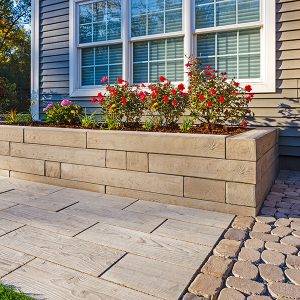
Hardscape Products
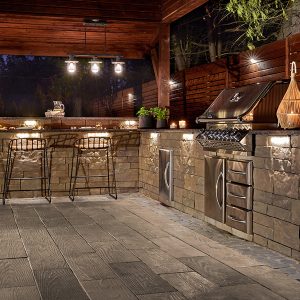
Hardscape Products

Hardscape Products

Hardscape Products

Hardscape Products
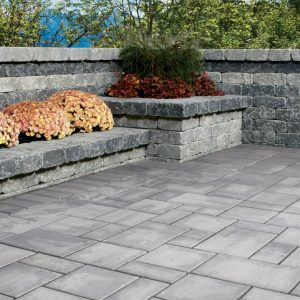
Hardscape Products
You might think that retaining walls and garden walls are all about function. Which makes complete sense. After all, retaining walls and garden walls prevent soil erosion, keep your softscape designs where you want them, and reduces the risk of flooding.
There is no doubt that retaining walls and garden walls serve an important function in your landscaping design. But they’re not all utility.
These hardscape structures can be used to enhance an outdoor space visually and aesthetically. Steep inclines in a yard can be turned into terraced garden levels. Flat topography can be built up or graded down to create tiers or sunken living areas surrounded by retaining walls and garden walls filled with softscape plants, shrubs and flowers.
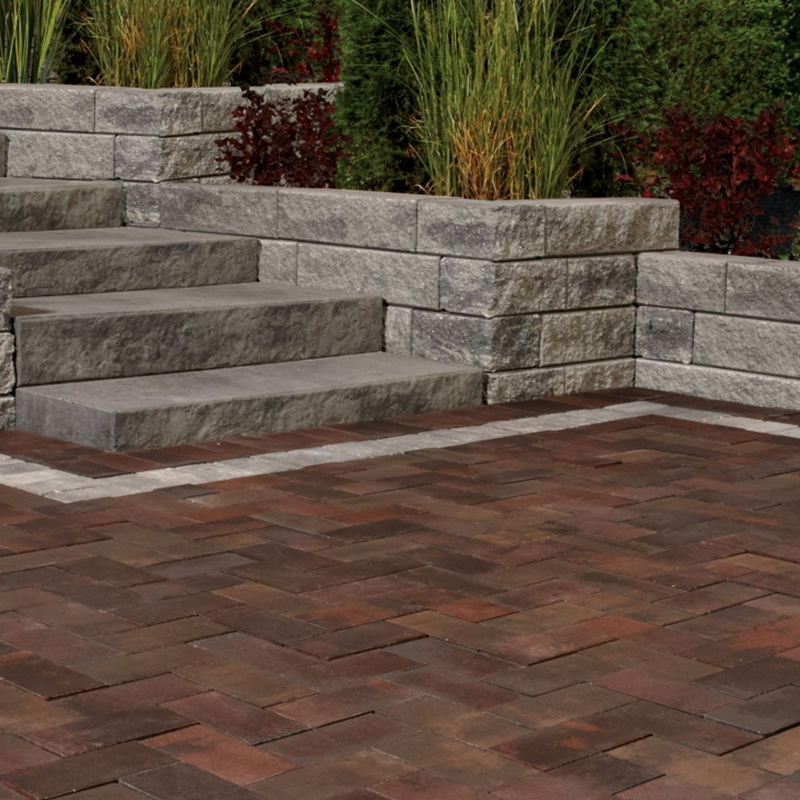
Stone retaining walls and garden walls are a great way to increase the usable space of your yard or garden. Both garden walls and retaining wall can be a great way to break up your space or inject some much needed visual interest into your landscape. Many homeowners use stone walls to help control erosion, add curb appeal, and they also provide a focal point for the landscaping of their yard. Additionally, these walls can be created to help maintain the structural integrity of homes.
Stone retaining walls and support walls do require construction expertise, however. So you should seek out the proper advice and guidance to ensure they are installed properly to look good, perform well, and hold up against nature over time.
With today’s modern landscaping design, and the hardscaping materials available to make your design a reality, you can turn any outdoor space into the oasis you dream of.
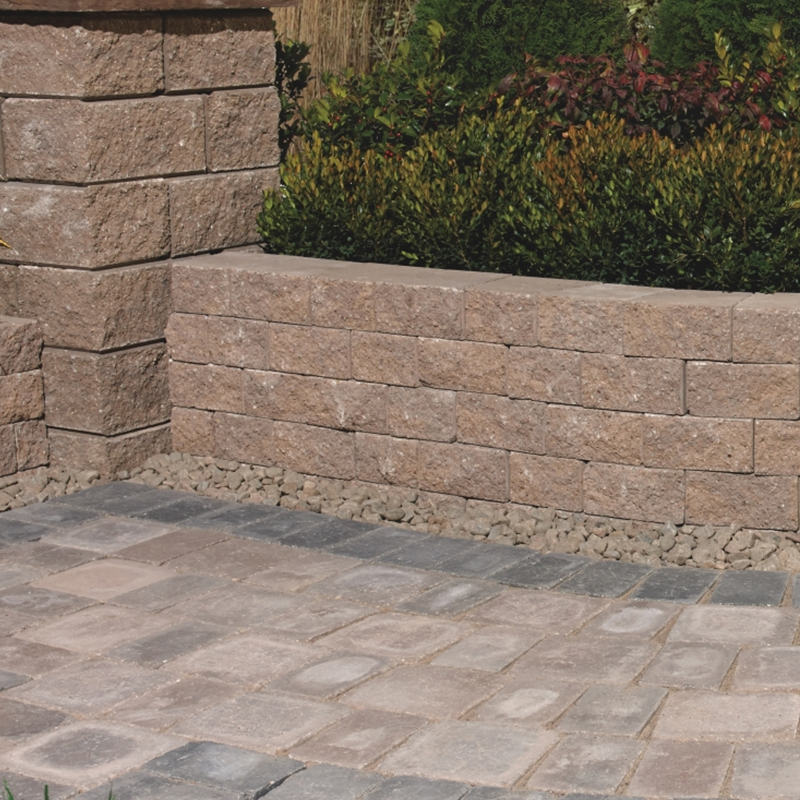
Although garden wall, retaining wall, support wall and stone wall are all used somewhat interchangeably by lay people and homeowners, contractors and landscape designers know there is a big difference.
Hardscape walls are meant to seamlessly and discreetly blend into the overall landscaping design. They’re not supposed to show us their function, or lack there of. Great landscape design incorporates retaining walls and garden walls into the overall design so that it seems they should be there, and there would be something missing if they weren’t.
Below the surface design, however, some of these walls are hard at work.
The question you need to ask is, does my landscape design include walls that are functional or are they purely aesthetic?
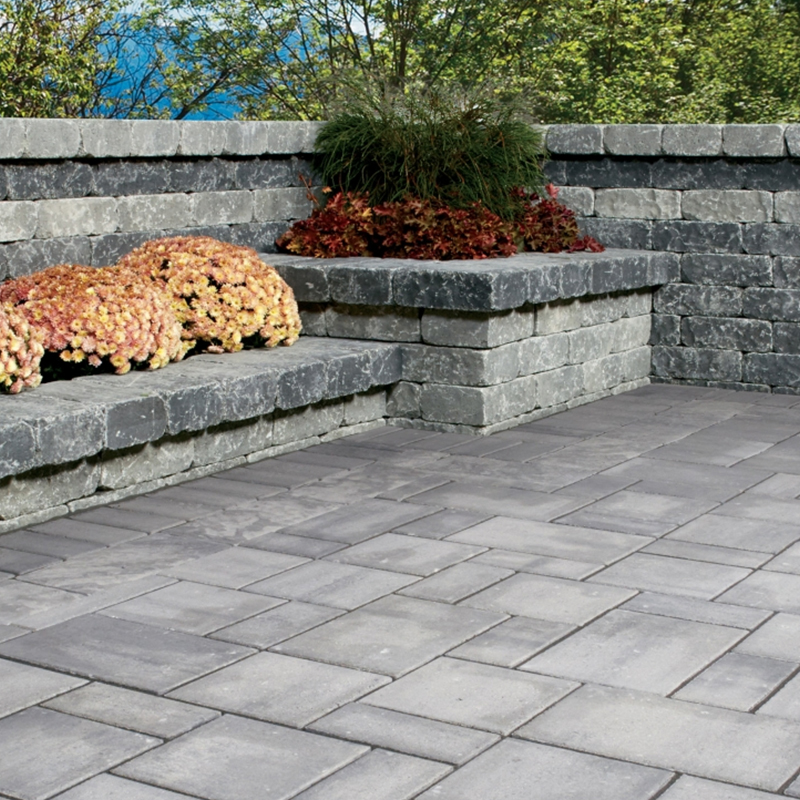
A retaining wall is a strong structure that is made to keep a hill, slope or mound of earth in place. These walls are designed to be horizontally loadbearing, because the weight of the earth behind the wall is pushing forward into the wall. All retaining walls serve a function and they adhere to strict construction standards.
Almost all retaining walls are part of a system which may include geogrid, stone masonry, and drainage. But just because they serve a function doesn’t mean they can integrate into your landscape design. They absolutely do. It’s what’s going on below the surface of the design façade that’s important with retaining walls.
Unlike garden or free-standing walls, retaining walls typically require engineering and permit approvals.
Generally, retaining walls can be any height, but are usually higher than 3 feet.
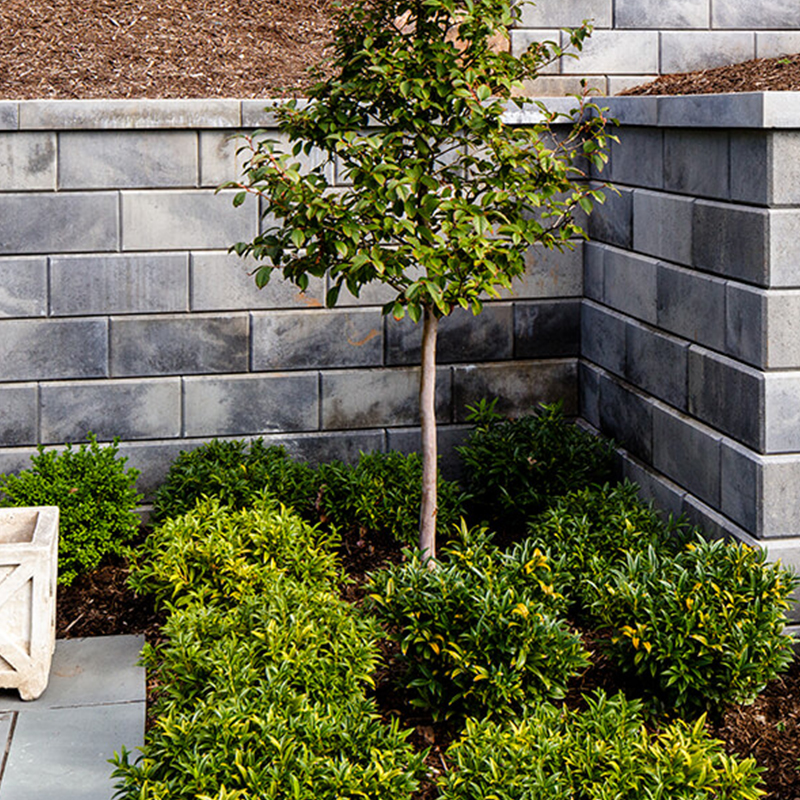
If your home is built on a slope, retaining walls can be a fantastic solution to add structure and visual appeal to your property.
Retaining walls can also be used in your front yard with flower beds and softscaping plants or shrubs to add warmth and life to the space. This is a great option if your home is located on a hill or in an area where your plants would normally have poor soil or drainage.
With so many retaining wall hardscape materials to choose from, you won’t have any trouble matching your home’s architecture to the landscape design materials.
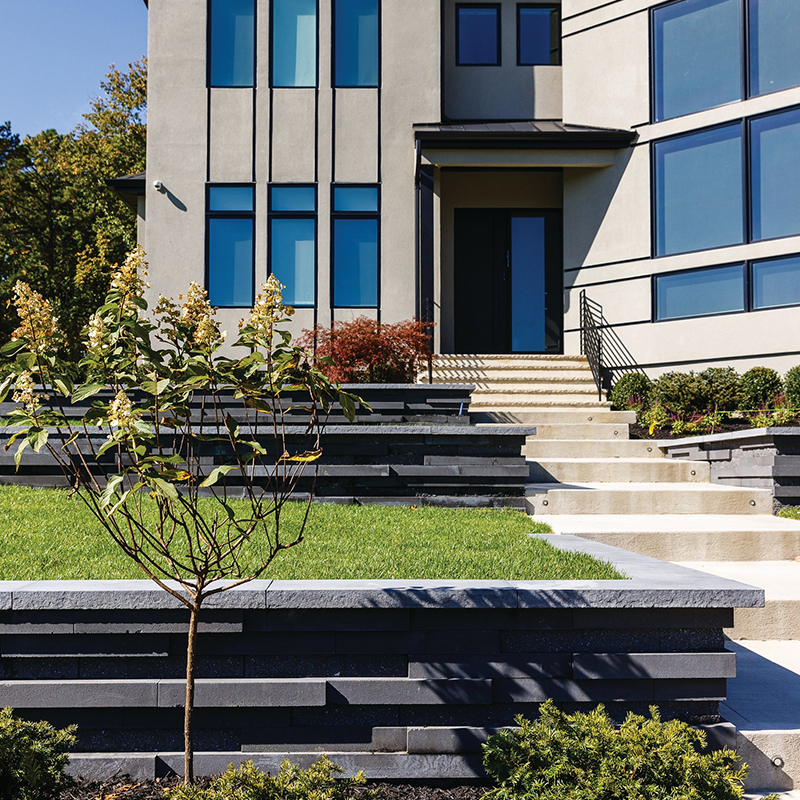
Garden walls surround and define, but they’re not as hardworking or as structurally capable as a retaining wall.
Typically no more than about 18-24 inches in height, garden walls edge or surround a landscape feature, like a garden bed, shrubbery or water feature. The garden wall acts as a division between the installed feature and the rest of the landscape.
These smaller decorative walls, bring emphasis to the landscape element and provide visual interest to the design as a whole. Garden walls are not meant to withstand the weight of too much heavy, packed earth, and they are not designed to bear any horizontal load. Topsoil is about all that these walls are designed to support.
Like retaining walls, garden walls are typically one-sided wall units.
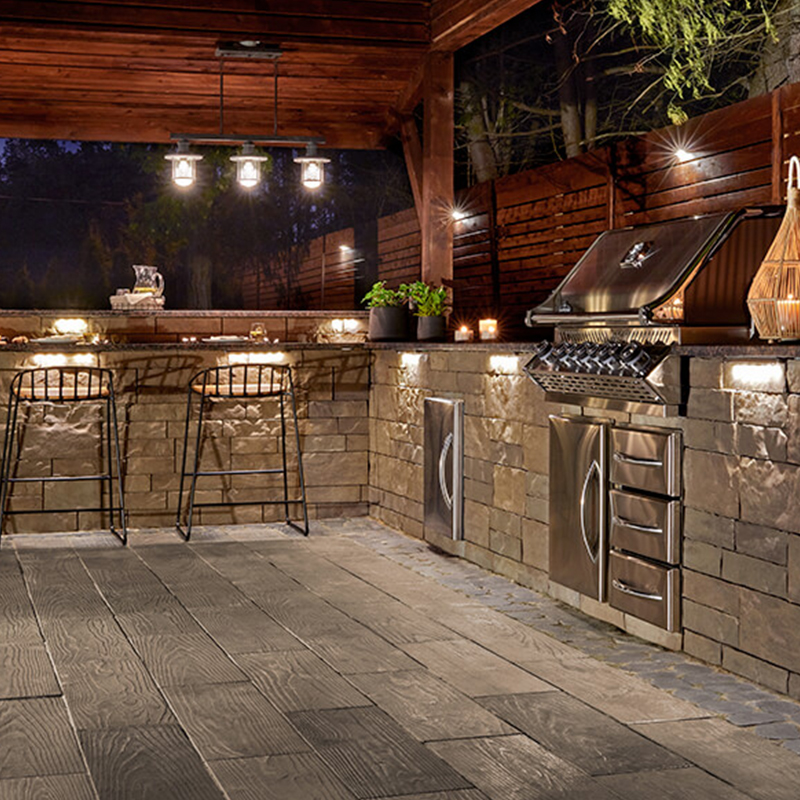
Support walls and stone walls are another landscape design element that you may wish to incorporate into your hardscape design. A landscape wall built to support outdoor structures are sturdy and designed to hold the vertical weight of architectural elements like pillars, gazebos, gates, pergolas or fencing.
Support walls must be strong enough to withstand the vertical pressure applied by the constructed element. These walls are typically surfaced on all angles.
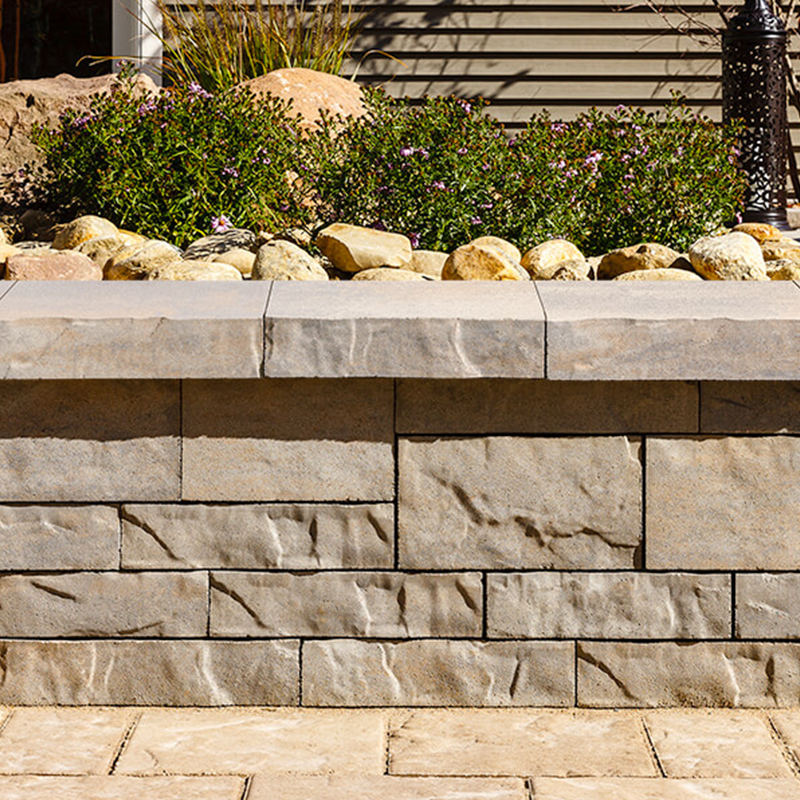
Depending on what style wall you choose, you may need stone coping or cap stones to finish the installation.
While some wall hardscaping material are designed to be “self-capping” solid units, other units are hollow and require a cap to finish off the wall. Typically only garden walls are solid and self-capping.
Caps come in both single and double sided, and are typically 2 to 3 inches in height.
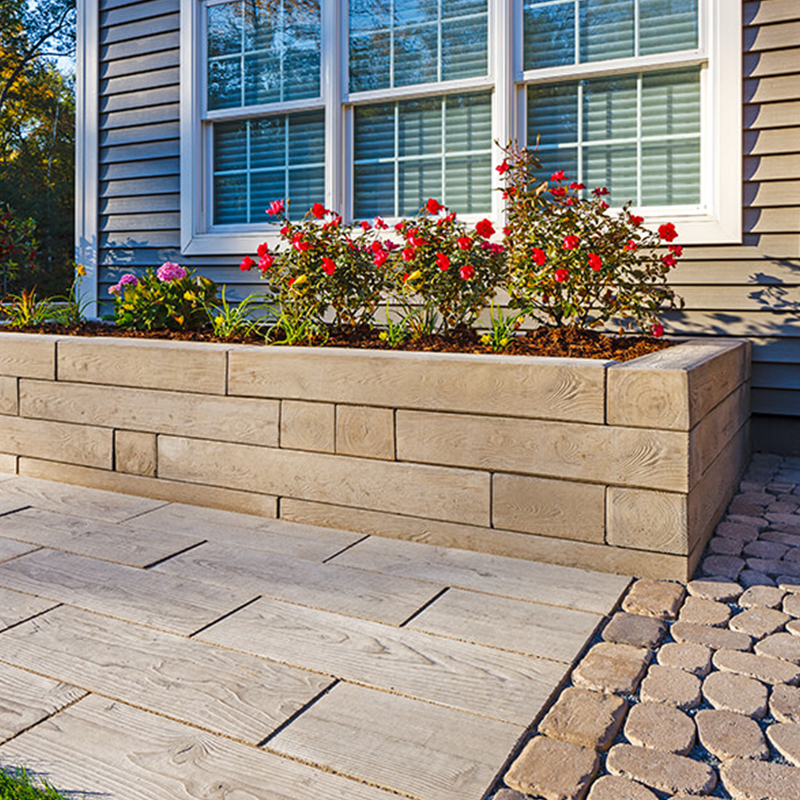
When it comes to residential retaining walls and garden walls, you have a lot of choice in materials, style, texture and colour. Your choice of materials is all going to come down to the type of wall you’re building, the landscape design, and your budget.
Depending on the purpose of the wall - whether a retaining wall or a garden wall - the look you want to achieve, and your budget for the project, your choice of materials is quite extensive. Concrete block, natural looking stone, or brick, are all on the table. Each of these options has different pros and cons, so you should take the time to evaluate which one will be best for your garden and yard.